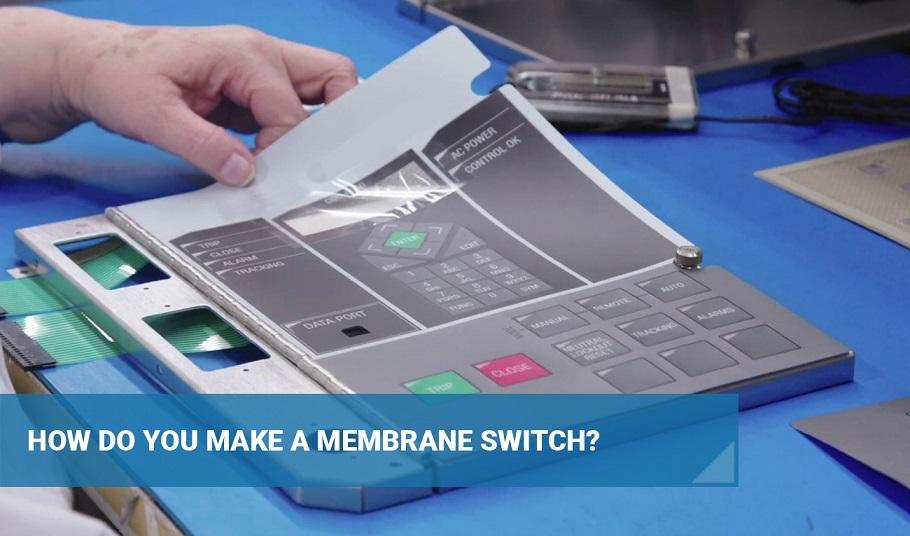Understanding the Functionality of Membrane Changes for User Interface Tools
The functionality of membrane switches represents a considerable development in individual interface layout, incorporating performance with visual adaptability. These buttons run through a multi-layered structure that converts customer communications into electrical signals, allowing for both compact layouts and strength versus ecological aspects. As markets increasingly prioritize customer experience, comprehending the subtleties of membrane layer button innovation comes to be crucial. What ramifications do these innovations hold for future applications, and just how might they redefine individual communications throughout various tools?
What Are Membrane Switches?
Membrane buttons are cutting-edge interface gadgets that assist in customer interaction with electronic devices. These versatile elements include numerous layers, consisting of a graphic overlay, spacer, and a published circuit layer. The design permits a seamless combination into numerous electronic devices, improving both the aesthetic and useful elements of customer interfaces.
Membrane buttons are frequently employed in a wide variety of applications, from home devices to industrial machinery and clinical devices. Their construction normally features a slim account, making them a perfect selection for compact styles. The tactile responses given by these switches can be engineered to fulfill details individual choices, making certain reliable interaction between the individual and the device.
Sturdiness is another substantial advantage of membrane switches, as they are immune to dirt, dampness, and chemicals, which improves their life expectancy in demanding environments. Additionally, these buttons can be personalized in regards to form, dimension, and visuals style, enabling branding and user-specific functions. In general, membrane switches over stand for a useful service for improving user experience in electronic gadgets, integrating functionality with aesthetic charm in an effective fashion.
Exactly How Membrane Switches Over Work
Operating on an uncomplicated concept, membrane changes use a layered building to register customer input properly. Each button includes numerous layers, including a printed circuit layer, a spacer layer, and a top visuals layer, which are developed to function together seamlessly. When an individual presses the leading layer, it presses the spacer layer, bringing the conductive components of the circuit layer into call with each other.
This get in touch with creates a closed circuit, signifying the tool to implement a details function. The layout enables different setups, including tactile responses, which can enhance the user experience by offering a physical sensation upon activation. The products used in membrane layer buttons commonly consist of versatile substratums, such as polyester or polycarbonate, which ensure longevity and resilience versus wear and tear.

Key Benefits of Membrane Switches

Another significant advantage is their density. Membrane buttons are slim and light-weight, which makes it possible for manufacturers to save room in their gadgets without sacrificing functionality. This attribute is particularly advantageous in applications where weight and quantity are essential considerations.
In addition, membrane layer buttons are immune to dust, wetness, and chemicals, improving their durability. This resilience expands their life-span and lowers the requirement for regular substitutes, leading to expense savings gradually.
Furthermore, the responsive feedback offered by membrane layer buttons can investigate this site be enhanced to improve customer communication. They can consist of attributes such as increased buttons or audible clicks, boosting functionality and user experience.
Applications Throughout Industries
Interface devices using membrane layer switches are widespread in a vast variety of sectors, showcasing their adaptability and functionality. Membrane Switch. In the medical field, membrane layer switches are essential to devices such as analysis devices and client tracking systems, where their resilience and simplicity of cleansing are important for keeping hygiene requirements. Likewise, in the auto sector, these switches are utilized in control panel controls and infomercial systems, offering a streamlined and modern-day user interface for customers.
Additionally, the consumer electronic devices sector benefits from membrane layer buttons in home appliances and handheld tools, where small style and easy to use user interfaces enhance user experience. Industrial applications also take advantage of membrane changes for control panels in equipment and automation systems, emphasizing their effectiveness and resistance to severe settings.
In the aerospace and defense sectors, membrane switches are made use of in cabin controls and equipment, where dependability and performance under extreme conditions are critical. In addition, the gaming market progressively integrates membrane layer switches in controllers and gallery makers, adding to an appealing user experience. Overall, the adaptability of membrane changes allows their prevalent use across numerous markets, highlighting their importance in contemporary interface design.
Future Trends in Membrane Layer Change Innovation

Furthermore, the usage of innovative materials, such as polycarbonate and polyester films, is expected to rise, giving boosted resilience and resistance to environmental stressors. These products add to the general long life of membrane layer buttons, making them appropriate for harsher commercial applications.
Furthermore, the consolidation of smart technology, consisting of IoT connection, will allow membrane layer switches to interact with other tools and systems, assisting in a more interactive user experience. This trend straightens with the growing demand for clever devices throughout different markets, from medical care to consumer electronic devices.
Last but not least, modification alternatives are expected to increase, enabling suppliers to develop bespoke options tailored to certain customer demands and choices. These developments will certainly position membrane layer switches as crucial components in the evolution of interface technology.
Final Thought
In final thought, membrane switches represent an essential innovation in individual interface modern technology, providing a reputable and functional option for varied electronic applications. As advancements in product scientific research and touch noticing have a peek at this site technologies proceed, the functionality and applicability of membrane layer buttons are anticipated to broaden, strengthening their importance in modern-day digital tools.
Comments on “The Function of a Membrane Switch in Modern Touch Interfaces and Controls”